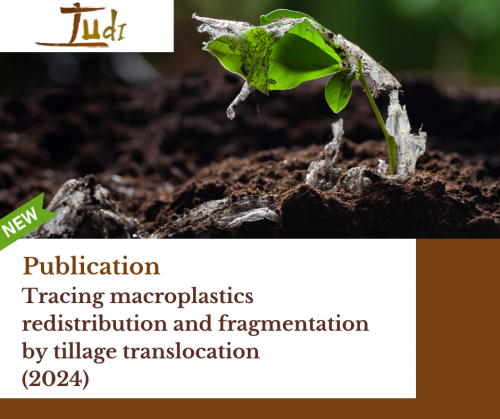TUdi article: Tracing macroplastics redistribution and fragmentation by tillage translocation
A new TUdi article “Tracing macroplastics redistribution and fragmentation by tillage translocation,” written by Ahsan Maqbol, Gema Guzmán, Peter Fiener, Florian Wilken, María-Auxiliadora Soriano, and José A. Gómez has been published in The Journal of Hazardous Materials. The article focuses on establishing a methodology for tracing macroplastic displacement.
This methodology is necessary since our understanding of macroplastic occurrence and behaviour has remained comparatively elusive, mainly due to a lack of a tracing mechanism. The methodology that is used is a combination of magnetic iron oxide-tagged soil and macroplastic pieces tagged by an adhesive passive radiofrequency identification transponder. Together, these elements allowed researchers to study how macroplastics move through different environments, which can be important for understanding pollution and its effects.
Using these techniques, a field study was conducted to analyse how tillage practices and plastic size affect the displacement of macroplastics, enhancing our understanding of their fate in arable land. Results indicated that the displacement of macroplastics depends on the tillage rather than the dimensions of the plastic itself.
The study follows how different tillage methods (non-inversion chisel tillage and inversion disk tillage) affect the displacement and fragmentation of macroplastics in arable land, highlighting that only inversion disk tillage causes significant fragmentation into macroplastics. In contrast, both tillage methods drove to similar burial of surface macroplastics into the tilled layer.
Overall, this study is one of the first to research the relationship between tillage and macroplastics, highlighting the importance of tillage in determining what happens to macroplastics in arable soils.
